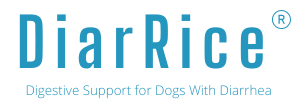Essential Strategies for Managing Dog Diet Changes Effectively

As a loving dog owner, you want the best for your furry friend. This means ensuring they receive the right nutrition for every stage of their life. But what if your dog’s needs change over time, or they develop sensitivities to their current diet? Navigating the world of dog food can be overwhelming, but fear not! This comprehensive guide will help you effectively managing dog diet changes and ensure your canine companion thrives on a well-balanced, nutritional meal plan.
Key Takeaways
- Understand the need for diet changes and consult with a vet before making any switches.
- Carefully monitor your dog’s health to identify signs of needing a new diet, then evaluate options for specific needs.
- Develop gradual transition plans while monitoring response. Incorporate novel proteins, limited ingredient diets & supplemental support as needed.
Understanding the Need for Diet Changes in Dogs
Diet changes in dogs can arise from various factors, such as life stage transitions, weight management, and addressing food sensitivities or allergies. Recognizing these reasons and seeking guidance from your veterinarian when considering a diet switch for your dog is necessary. They can evaluate your dog and recommend the best approach to prevent any potential health concerns or adverse reactions.
Changing your dog’s diet requires a well-thought-out plan to ensure a smooth transition. A sudden switch could lead to digestive upset and other complications. Understanding your dog’s specific needs allows you to make wise choices in your dog’s diet and provide optimal nutrition.
Identifying Signs That Your Dog Needs a New Diet
Monitoring your dog’s health for signs that a new diet might be required is key. Some common indicators include digestive issues like vomiting or diarrhea, skin problems such as itchiness or rashes, and changes in weight or energy levels. These symptoms could signal that your dog’s current diet is not providing the necessary nutrients for a healthy body weight.
If you notice any of these signs, consult your veterinarian who can help determine if a new diet is necessary and recommend the most suitable food for your dog to maintain a healthy weight. Ensuring your dog receives the right nutrition for their specific needs requires careful observation of their health.
Evaluating Dog Food Options for Specific Needs
When it’s time to switch your dog’s food, it’s important to consider their specific needs based on factors such as age, breed, and health conditions. To ensure a complete and balanced diet, examine pet food labels for essential information and consult your veterinarian for personalized guidance on the right dog’s food.
Monitoring your dog’s digestive health can also provide valuable insight during the transition process. Keep an eye on the consistency of their feces using a Fecal Scoring Chart, as consistently abnormal scores might indicate an issue requiring attention. Careful assessment of dog food options, in conjunction with professional advice, empowers you to confidently select the appropriate diet for your pet.
Crafting a Balanced Transition Plan
Creating a balanced transition plan is vital when changing your dog’s food, as it helps them adjust to their new diet without causing digestive upset. This involves gradually introducing the new food by mixing it with their current dog food. An abrupt change could lead to gastrointestinal distress, such as vomiting, diarrhea, and decreased appetite.
If your dog doesn’t take to the new food, there are some simple ways to make it more appealing for them. Try using a meal topper or mixing a little wet food with their dry kibble. Remember, every dog is unique, and their response to a new diet may vary. Be patient and monitor your pet’s reaction during the transition to ensure their health and well-being.
Gradual Integration: The 7-Day Switch
Gradually integrating new dog food over a 7-day period is important to minimize the risk of gastrointestinal issues. The 7-day switch method is all about gradually introducing new food to your diet. Here’s how to do it:
- Start with 25% of the new food mixed in with your old diet for 2-3 days.
- Then increase to 50% for the next 2-3 days.
- Finally, end by switching to 75% new food and 25% old for the last 2-3 days.
This approach helps your dog’s digestive system adjust to the new diet, reducing the likelihood of stomach upset.
If your dog experiences any adverse reactions during the transition, like vomiting or diarrhea, it’s necessary to revert to their previous diet and proceed with the transition more slowly. If symptoms persist after switching dog food back, consult your veterinarian for further advice.
Monitoring Your Dog's Response
Keep a close eye on your dog’s response to the new diet. This includes monitoring their energy levels, weight, and stool quality. If you notice any concerning symptoms or if your dog is not consuming the new food after two days of attempting to transition, consider trying a different diet or seeking veterinary guidance.
A new diet can affect your dog’s energy levels, so it’s crucial to provide them with a balanced diet, adequate sleep, and regular exercise to maintain optimal energy levels. Careful monitoring of your dog’s response throughout the transition ensures they receive the right nutrition and maintain their overall health.
Addressing Weight Management in Dogs
Effectively addressing weight management, a vital aspect of your dog’s overall health, is necessary. By formulating a weight loss program with new dog foods and maintaining a healthy weight through balanced nutrition, you can help your canine companion achieve and maintain a healthy body weight.
Consult your veterinarian to develop a weight loss program tailored to your dog’s needs. They can help you with the following:
- Choose appropriate dog foods designed for weight management
- Provide guidance on portion control
- Provide guidance on exercise to support your dog’s weight loss journey.
Formulating a Weight Loss Program With New Dog Foods
Successful weight loss programs for your dog necessitate careful planning and consideration of their specific needs. With your veterinarian’s guidance, incorporate new dog foods specifically designed for weight management. These foods are typically formulated with reduced calorie content and increased fiber content to enable dogs to feel satiated with fewer calories.
Monitor your dog’s progress throughout the weight loss program and adjust their calorie intake or exercise routine as needed to help your dog lose weight. Remember, weight loss should be gradual and healthy, so be patient and consult your veterinarian for personalized advice and support.
Maintaining a Healthy Weight Through Balanced Nutrition
Providing balanced nutrition and monitoring calorie intake are essential for maintaining your dog’s healthy weight. This involves choosing high-quality dog food that meets their specific nutritional needs and ensuring proper portion control.
Regular exercise also plays a vital role in weight maintenance, so be sure to incorporate physical activity into your dog’s daily routine. By combining balanced nutrition with regular exercise, you can help your dog maintain a healthy weight and enjoy optimal health.
Dealing With Dietary Sensitivities and Allergies
Addressing dietary sensitivities and allergies in your dog necessitates careful attention and a bespoke approach. By identifying triggers in new dog foods and incorporating novel proteins or limited ingredient diets, you can address these issues and support your dog’s overall health.
Working closely with your veterinarian to identify the cause of your dog’s sensitivities and formulate an effective dietary plan to minimize the risk of allergic reactions is important.
Identifying and Avoiding Triggers in New Dog Foods
To address food allergies and sensitivities, start by identifying common allergens in your dog’s diet, such as grains, dairy, and certain proteins. Once identified, adjust your dog’s diet to avoid these triggers and minimize the risk of an adverse reaction.
If you’re unsure which ingredients are causing the issue, consult your veterinarian who can help pinpoint the specific allergens and recommend a suitable diet for your dog.
Incorporating Novel Proteins and Limited Ingredient Diets
Introducing novel proteins or limited ingredient diets can help reduce the risk of allergic reactions in most dogs, especially those with sensitivities. Novel proteins include uncommon protein sources like kangaroo, venison, or duck, which are less likely to trigger sensitivities.
Limited ingredient diets, on the other hand, simplify your dog’s diet by reducing the number of ingredients they’re exposed to, making it easier to identify and eliminate potential allergens or irritants. Incorporating these strategies into your dog’s meal plan helps manage their sensitivities and guarantees they receive the proper nutrition they need.
Supplemental Support During Diet Changes
During diet changes, supplemental support like probiotics or digestive enzymes can ease the transition and bolster your dog’s digestive health. Probiotics can enhance digestion, absorption of nutrients, and bolster the immune system, while digestive enzymes can aid in breaking down foods into digestible nutrients.
To ensure optimal results when you switch dog food, choose commercial dog foods specifically formulated for dogs and follow the dosage instructions provided by the manufacturer. By offering supplemental support during diet changes, you can help your dog adjust to their new food more comfortably and maintain their overall health.
Navigating Life Stage Transitions in Dog Diets
As your dog ages and their nutritional needs change, appropriate diet adjustments become necessary. Planning food transitions from puppy to adult, and making diet adjustments for senior dogs, guarantees your canine companion receives adequate nutrition throughout all life stages.
Consult your veterinarian for guidance on the appropriate timing and approach for transitioning your dog’s diet based on their breed, age, and development.
Planning Puppy to Adult Food Switches
When it’s time to switch your puppy to adult dog food, consider their breed, age, and development to determine the best approach for a gradual transition. Generally, small breeds are fully grown between 6 to 8 months, medium breeds between 12 to 15 months, and large or giant breeds between 12 to 24 months.
Follow a gradual transition plan, similar to the 7-day switch method mentioned earlier, to help your puppy adjust to their new adult food without causing digestive upset.
Adjusting Diets for Senior Dogs
As your dog enters their senior years, their nutritional needs and health concerns may change. Adjusting their diet to accommodate these changes is crucial to ensuring they receive the necessary nutrients for optimal health.
Work with your veterinarian to develop a tailored diet plan for your senior dog that addresses their changing nutritional needs and any health concerns they may have, such as arthritis or joint issues, or obesity.
Innovative Feeding Strategies: Rotational Feeding
Rotational feeding is an innovative feeding strategy that involves periodically altering the protein source or type of dog food in your pet’s diet. This approach provides dietary diversity and may potentially diminish the risk of allergies or sensitivities.
While rotational feeding may not be suitable for all dogs, especially those with existing digestive issues or specialized diets for health reasons, it can be a beneficial strategy for many dogs in providing variety and reducing the risk of allergies.
Troubleshooting Common Issues When Changing Dog Foods
You may encounter common issues such as food refusal or digestive upset during the process of trying to change your dog’s food. To address these challenges, adjust the transition plan by either trying a different diet or seeking veterinary advice.
If your dog experiences mild diarrhea or gassiness during the transition, revert to their previous diet for a few days and then gradually reintroduce the new food. Providing a probiotic or digestive enzyme supplement can also help support your dog’s digestive health during this time.
Managing your dog’s diet effectively is essential for their overall health and well-being. By understanding their unique needs, planning gradual transitions, addressing weight management, and navigating life stage transitions, you can ensure your canine companion thrives on a well-balanced, nutritional meal plan. Always consult your veterinarian for guidance and support when making changes to your dog’s diet, and remember that a happy and healthy dog is a well-fed one.
Frequently Asked Questions
How long does it take for a dog to adjust to a new diet?
It generally takes two to three weeks for a dog to adjust to a new diet by slowly transitioning the food so the gastrointestinal system can adapt.
How do I transition my dog to a new diet?
To transition your dog to a new diet, gradually increase the percentage of the new food over seven days until it is 100% new food. Start by mixing 25% new food with 75% old food for the first two days, then 50/50 for the next two days, and 75% new food to 25% old food for the following two days. Finally, feed your pet only the new food for the last three days.
When should I switch my puppy to adult dog food?
For the best results, it's best to consult your veterinarian for specific recommendations. Generally, small breeds should switch around 6 to 8 months, medium breeds between 12 to 15 months, and large or giant breeds between 12 to 24 months.
How can I help my dog lose weight?
Consult your veterinarian to create an appropriate weight loss plan for your dog, including proper diet, portion control, and exercise.
What are some common allergens in dog foods?
Common allergens in dog foods include grains, dairy, and proteins such as beef, chicken, and fish.
Related Articles about Sudden Diet Changes in Dogs
Dog Diarrhea Diet Fix
Sudden Diet Changes Causes
Preventing Diet Changes
Dog Diarrhea Diet Signs
Consult Vet Diet Shifts
Safe Dog Diet Changes
Balanced Diet For Dogs
Dog's Slow Diet Changes
Risks of Sudden Diet Changes
Jeffrey Kordell
Dr. Jeff Kordell, DVM is a practicing veterinarian in the northern suburbs of Chicago. He is a graduate of the University of Illinois Veterinary School. Dr. Kordell owns Animal Medical Center at Fort Sheridan and has had his own private practice for over 30 years. He is the co-founder of K&S Veterinary Labs LLC the maker of DiarRice.

